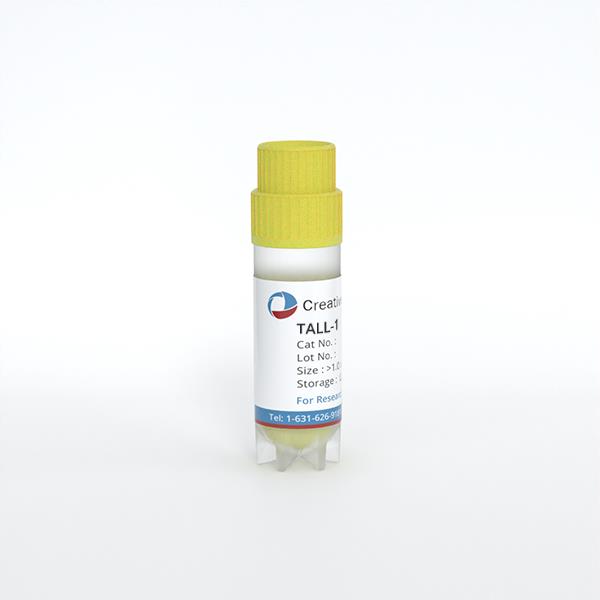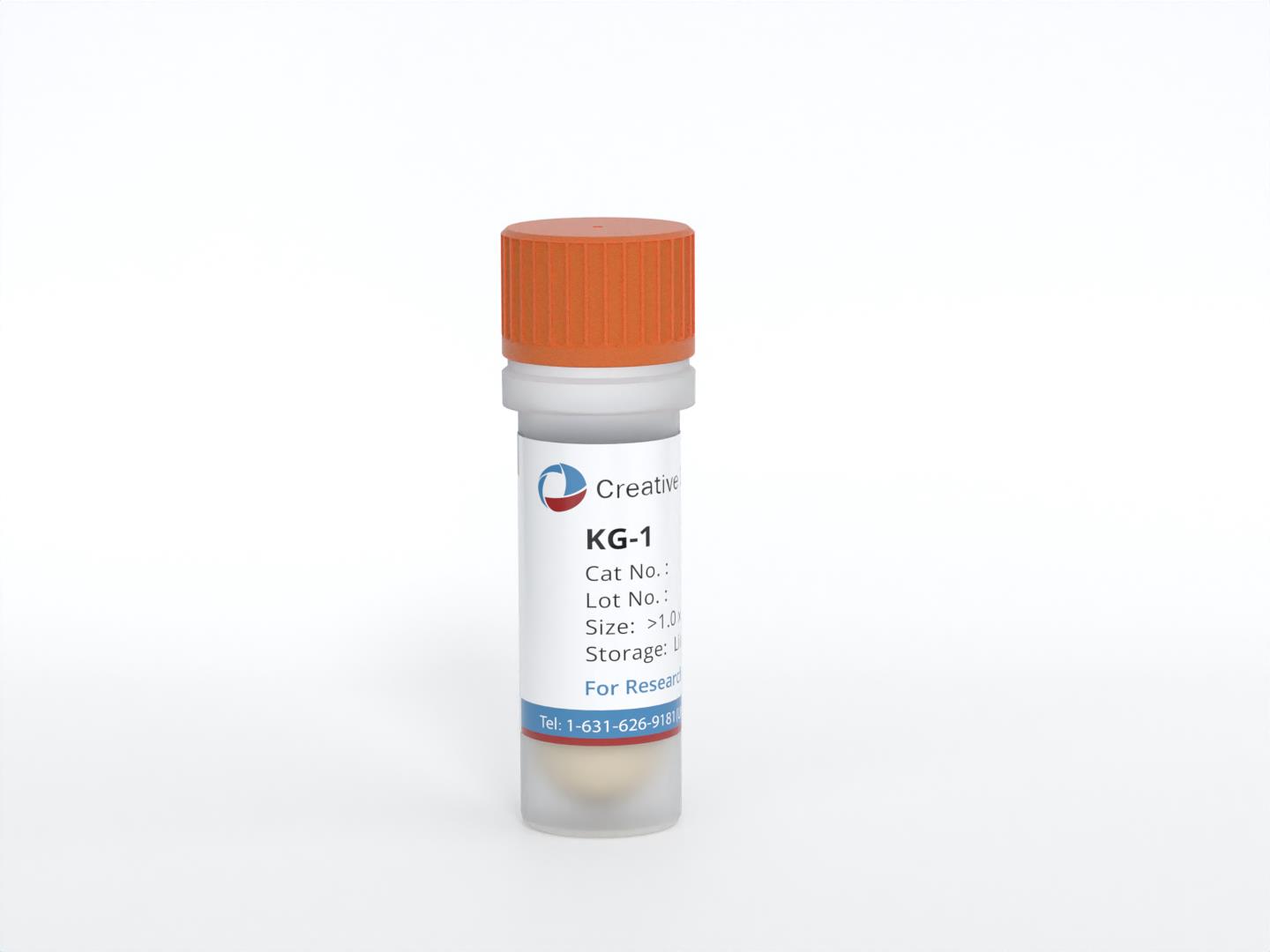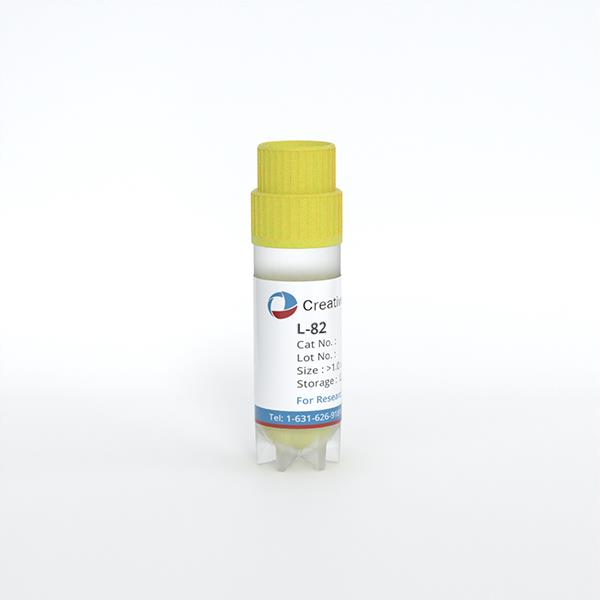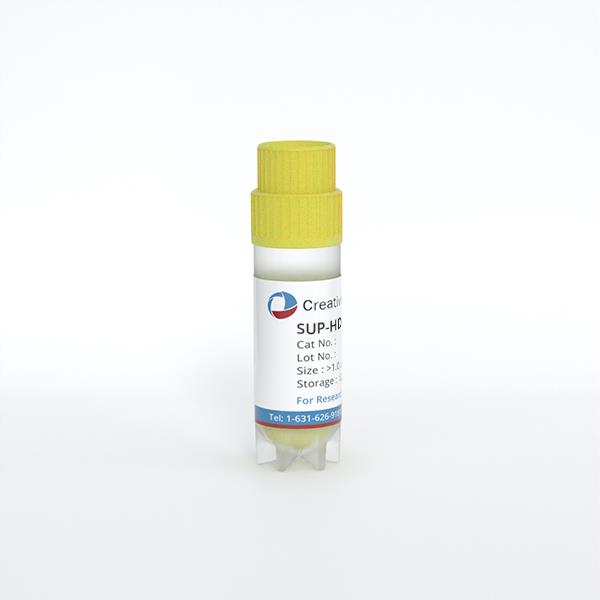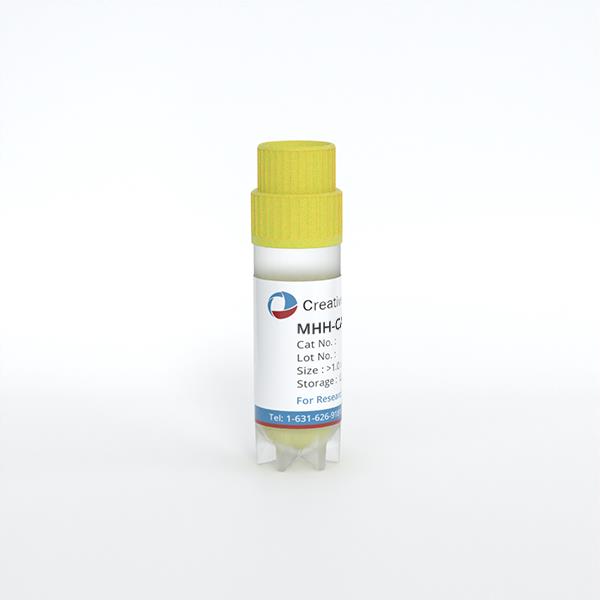
SUP-B15
Cat.No.: CSC-C0437
Species: Homo sapiens (Human)
Source: Bone Marrow
Morphology: small round cells growing singly in suspension
Culture Properties: suspension
- Specification
- Background
- Scientific Data
- Q & A
- Customer Review
Cell type: B cell precursor leukemia
Origin: established from the bone marrow of a 9-year-old boy with acute lymphoblastic leukemia (B cell precursor ALL) in second relapse in 1984; described to carry the ALL-variant (m-bcr) of the BCR-ABL1 fusion gene (e1-a2)
The SUP-B15 cell line was isolated from bone marrow of an 8-year-old male patient with Philadelphia chromosome-positive B-cell acute lymphoblastic leukemia (Ph+ ALL). The SUP-B15 is a B lymphoblasts cell line characterized morphologically by being round to oval in shape, slightly large and uniform in size, and grows in a scattered pattern of individual cells, but with increased cellular content, intercellular adhesion, and pseudopodia on microscopy. They express B-cell markers and lack T-cell markers, confirming the B-cell lineage of SUP-B15 cells. Notably, SUP-B15 cells are BCR-ABL fusion gene positive, a crucial molecular feature used to study the oncogenic role of this fusion protein in leukemia progression. Additionally, they display a positive TP53 mutation status, which may contribute to resistance to DNA damage. They show sensitivity or partial resistance to Imatinib and variable sensitivity or resistance to DNA damaging agents, including Paclitaxel and Doxorubicin, which may guide drug response assays and combination therapies.
SUP-B15 cell line is used for hematological research, especially in leukemia pathogenesis, anti-leukemic drug screening, gene editing and RNA interference studies, and cytokine production and immune modulation investigations. The research focuses on the mechanisms of the BCR-ABL fusion protein, the molecular characteristics of Ph+ ALL, and the resistance mechanisms to targeted therapies, making SUP-B15 a valuable tool for advancing our understanding of acute lymphoblastic leukemia.
YAP1 Knockdown Attenuates the Hippo Pathway in SUP-B15 Cells
Despite the clinical progress in chemotherapy and stem cell transplantation, relapse and chemoresistance of childhood acute lymphoblastic leukemia (cALL) are still serious problems, which calls for novel targets for cALL treatment. Jiang's group set out to explore the Hippo pathway and its role in cALL by detecting the protein expression levels of YAP1, TAZ, and Cyr61. They downregulated YAP1 in SUP-B15 cells by transfecting shRNA to test the effect of YAP1 on cALL development. The YAP1 mRNA and protein levels were reduced in the sh-YAP1 group compared to the sh-NC group, while they were increased in the YAP1 group compared to the Vehicle group (Fig. 1a-c), which verified the transfection effect. The protein level of p-YAP1 was elevated and TAZ and Cyr61 levels were reduced when YAP1 was knocked down. The protein level of p-YAP1 was increased, while TAZ and Cyr61 levels were decreased in the YAP1 group compared to the Vehicle group (Fig. 1b and c). The data shows that YAP1 knockdown inhibits the Hippo pathway in SUP-B15 cells.
 Fig. 1. YAP1 knockdown attenuates the Hippo pathway in SUP-B15 cells (Jiang H, Zhang R B, et al., 2024).
Fig. 1. YAP1 knockdown attenuates the Hippo pathway in SUP-B15 cells (Jiang H, Zhang R B, et al., 2024).
Combination of Azacitidine and Flumatinib Induces Apoptosis in Sup-B15 Cells by Blocking the Cell Cycle through the MDM2-P53 Signaling Pathway
Adult acute lymphoblastic leukemia (ALL) is a life-threatening malignancy characterized by the Philadelphia (Ph) chromosome and the BCR-ABL fusion protein. Flumatinib (FLU), a tyrosine kinase inhibitor (TKI), could induce cell cycle arrest and apoptosis in Ph+ALL. Azacitidine (AZA) can target aberrant DNA methylation commonly occurring in Ph+ALL. However, the combinatorial effects and mechanisms of AZA and FLU remain unknown. Zhang et al. aimed to elucidate the synergistic effects of TKI FLU combined with the methyltransferase inhibitor AZA in Ph+ALL cells and the possible underlying mechanism.
A dose- and time-dependent effect on the cell proliferation arrest was found in SUP-B15 cells with treatment of AZA or FLU alone. The IC50 of AZA and FLU were 5.6 μM and 0.9 μM, respectively (Fig. 2A). Combination of AZA and FLU significantly enhanced the cell proliferation arrest compared with FLU alone (Fig. 2B). The CompuSyn analysis showed a synergistic effect of AZA and FLU (Fig. 2C). Combination treatment significantly induced G1 phase arrest (Fig. 2D) and apoptosis (Fig. 2E) more strongly than single treatment. qPCR assay showed an upregulation of BAX and P21 mRNA and a downregulation of BCL2 and CyclinE mRNA with combination treatment (Fig. 2F). Moreover, TP53 was upregulated and MDM2 was downregulated at both mRNA (Fig. 2F) and protein levels (Fig. 2H). MDM2 was significantly overexpressed in Ph+ALL patient cohort in the GEO database (Fig. 2G). The synergistic mechanism was summarized in (Fig. 2I). The above results indicated that the combination of AZA and FLU showed a synergistic anti-leukemia effect on cell proliferation arrest and apoptosis in Ph+ALL cells.
 Fig. 2. The combination of AZA and FLU has a synergistic anti-leukemia effect on cell proliferation arrest and apoptosis in Ph+ALL cells (Zhang L Y, Ge Z, et al., 2023).
Fig. 2. The combination of AZA and FLU has a synergistic anti-leukemia effect on cell proliferation arrest and apoptosis in Ph+ALL cells (Zhang L Y, Ge Z, et al., 2023).
Ask a Question
Write your own review
- You May Also Need
- Adipose Tissue-Derived Stem Cells
- Human Neurons
- Mouse Probe
- Whole Chromosome Painting Probes
- Hepatic Cells
- Renal Cells
- In Vitro ADME Kits
- Tissue Microarray
- Tissue Blocks
- Tissue Sections
- FFPE Cell Pellet
- Probe
- Centromere Probes
- Telomere Probes
- Satellite Enumeration Probes
- Subtelomere Specific Probes
- Bacterial Probes
- ISH/FISH Probes
- Exosome Isolation Kit
- Human Adult Stem Cells
- Mouse Stem Cells
- iPSCs
- Mouse Embryonic Stem Cells
- iPSC Differentiation Kits
- Mesenchymal Stem Cells
- Immortalized Human Cells
- Immortalized Murine Cells
- Cell Immortalization Kit
- Adipose Cells
- Cardiac Cells
- Dermal Cells
- Epidermal Cells
- Peripheral Blood Mononuclear Cells
- Umbilical Cord Cells
- Monkey Primary Cells
- Mouse Primary Cells
- Breast Tumor Cells
- Colorectal Tumor Cells
- Esophageal Tumor Cells
- Lung Tumor Cells
- Leukemia/Lymphoma/Myeloma Cells
- Ovarian Tumor Cells
- Pancreatic Tumor Cells
- Mouse Tumor Cells

